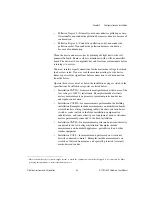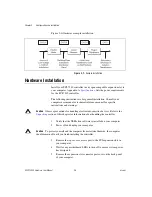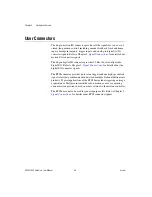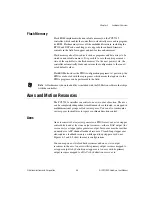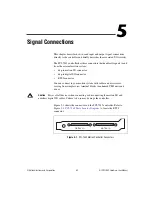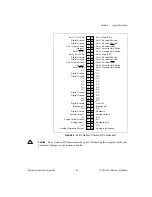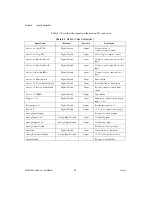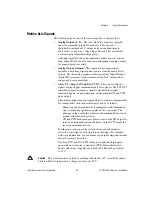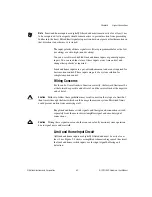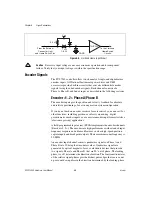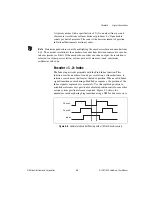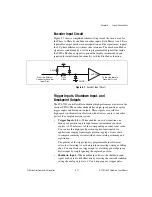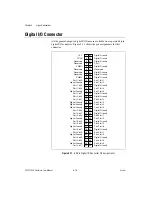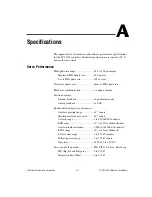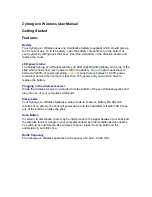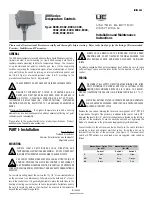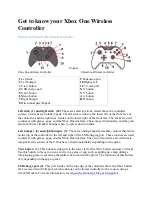
Chapter 5
Signal Connections
©
National Instruments Corporation
5-5
NI PCI-7342 Hardware User Manual
Motion Axis Signals
The following signals control the servo amplifier or stepper driver:
•
Analog Output <1..2>
—These 16-bit DAC outputs are typically
the servo command outputs for each axis. They can drive
the industry-standard ±10 V output, and you can limit them to
any positive or negative voltage range desired. They also feature
a software-programmable voltage offset.
Although typically used as the command output of an axis control
loop, unused DACs can also function as independent analog outputs
for general-purpose control.
•
Analog Output Ground
—This separate return connection is
available to help keep digital noise separate from the analog DAC
outputs. Use this analog ground connection and not Digital Ground
(digital I/O reference) as the reference for the DAC outputs when
connecting to servo amplifiers.
•
Axis <1..2> Step (CW) and Dir (CCW)
—These open-collector
signals are the stepper command outputs for each axis. The PCI-7342
controller supports both major industry standards for stepper
command signals: step and direction, or independent CW and CCW
pulse outputs.
The output configuration and signal polarity is software programmable
for compatibility with various third-party drives, as follows:
–
When step and direction mode is configured, each commanded
step (or microstep) produces a pulse on the step output. The
direction output signal level indicates the command direction of
motion, either forward or reverse.
–
CW and CCW mode produces pulses (steps) on the CW output for
forward-commanded motion and pulses on the CCW output for
reverse-commanded motion.
In either case, you can set the active polarity of both outputs to
active-low (inverting) or active-high (non-inverting). For example,
with step and direction, you can make a logic high correspond to either
forward or reverse direction.
The Step (CW) and Dir (CCW) outputs are driven by high-speed
open-collector transistor-to-transistor (TTL) buffers that feature
64 mA sink current capability and built-in 3.3 k
Ω
pull-up resistors
to +5 V.
Caution
Do
not
connect these outputs to anything other than a +5 V circuit. The output
buffers will fail if subjected to voltages in excess of +5.5 V.

